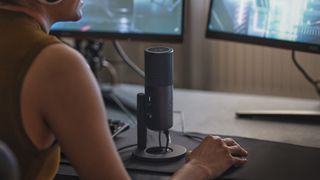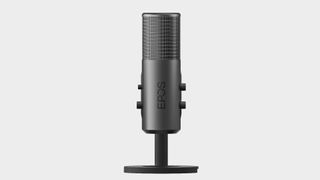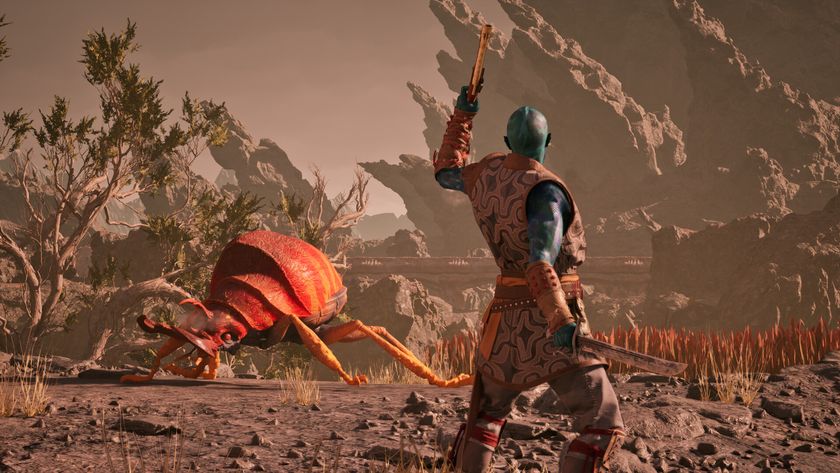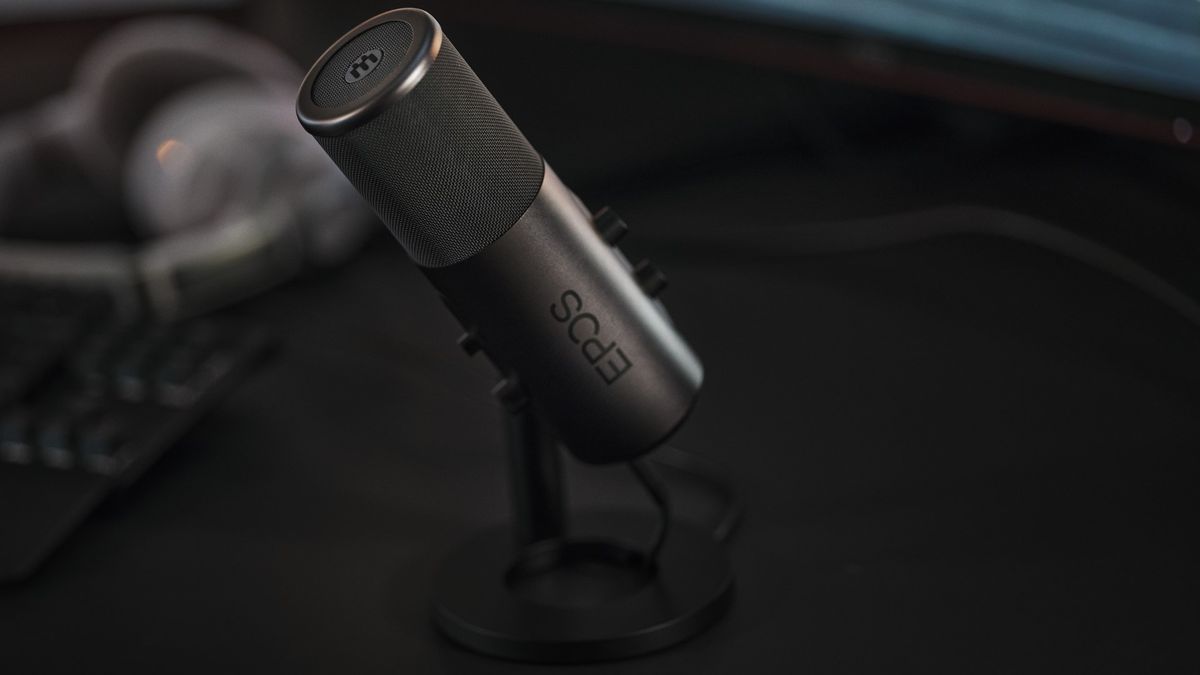12DOVE Verdict
A strong debut mic that needs a few small revisions to truly compete at this price point.
Pros
- +
Sophisticated looks
- +
Four polar patterns
Cons
- -
No volume or gain markers
- -
Sound can’t cut it with Blue’s Yeti X
Why you can trust 12DOVE
Although EPOS’ origins go back more than a hundred years, the EPOS brand name itself is a relative newcomer to the hotly contested gaming audio market. While it got a proverbial leg-up from Sennheiser by working in collaboration with the audio giant and later taking over production of what were erstwhile Senny’s gaming headset lines, ventures into the best microphone for streaming market is are a new direction.
This EPOS B20 is a step into the unknown, and priced just under $200/£200 it’s a bold step at that; one that takes it right into the arena with Blue’s formidable Yeti X. It’s about time someone toppled the Logi-owned company from the top of the streamer mic hierarchy in the name of greater product innovation, but can EPOS pull the sword from the stone and do it?
Design & Features
As the price indicates, this is a premium proposition. No expense has been spared on the B20’s packaging, nor on the look and feel of the unit itself. The mic capsule itself is finished to a high standard in a semi-matte aluminium housing, with physical polar pattern, volume, gain, and mute controls arranged in rows at either side. The gain and volume controls have a slight problem - there are no markers on the dial or the capsule, and the dials themselves rotate 360 degrees, so there’s no way of logging your settings once they’re dialled in nicely, or knowing when you’ve accidentally changed them with an errant hand gesture.
That capsule sits on a weighted ring stand which doesn’t take up a lot of space on your desk, and the mounting allows for vertical or horizontal configurations. At this point, we’d usually say you’ll get the best sound up close by mounting the mic on a boom arm, but the placement of the B20’s controls makes that a bit trickier - you’d need to forsake a shock cage and mount it via the arm that connects to the ring base, rather than mounting the capsule directly. Not a biggie, but it makes fine-tuning the mic placement that bit more of an involved task.

EPOS has its own app, the EPOS Gaming Suite, for further tweaking such as EQ profiles and test recordings, but mercifully it’s not required for operation. All you need is a spare USB slot and you’re up and running within seconds.
A total of four mic patterns are available here: cardioid, omnidirectional, bidirectional, and stereo. Of those four, cardioid and omni prove most useful, the former for streamers and podcasters who just want to get their voice heard, and the latter for those with a home recording bent and an ear for Steve Albini-style room noise. Bidirectional and stereo modes can be used to record two sources at once, in a pinch, but if you’re serious about sound quality it’s always better to capture two sources with two mics so that you can tweak two separate waveforms later down the line.

Performance
Let’s get stuck into the sound. Using the cardioid pattern, the B20 captures vocal inputs with a warmth and midrange that’s ready for broadcasts over Twitch and the like - considering their compression standards, a lot of studio sparkle is lost in the broadcast anyway. However, it lacks a little detail compared to the Yeti X, which picks up sibilants more precisely and seems to better capture the richness of an individual voice’s timbre. The Yeti fares better at slightly longer distances, too - 0.5m away from the source, both mics introduce a noticeable amount of room noise, but the Yeti X retains a natural quality, whereas the B20 sounds 'EQed'.
However, the B20 fares better in minimising pops and leveling out volume. The Yeti X has a delicious studio-style compression when driven at higher gains, but when you peak, you really know about it. EPOS’ algorithms seem better tuned for keeping high gain inputs sounding palatable.

Overall - should you buy it?
Just like its headsets - and the Sennheiser gaming headsets that came before - the first mic from EPOS is immaculately presented with solid sound, and takes its visual cues from high-end enthusiast audio while retaining the features streamers and gamers need on hand. Combining this mic with an otherwise Razer streaming setup, or adding it to a setup that already has the best capture card, and the best ring light and the best green screen is still a move we can recommend - and you won't be disappointed.
However, a handful of small design missteps hamper its useability, and sadly it can’t quite match Blue’s imperious Yeti X for sound quality, but this remains an encouraging first stab at the market from an ambitious brand.
Phil Iwaniuk is a multi-faceted journalist, video producer, presenter, and reviewer. Specialising in PC hardware and gaming, he's written for publications including PCGamesN, PC Gamer, GamesRadar, The Guardian, Tom's Hardware, TechRadar, Eurogamer, Trusted Reviews, VG247, Yallo, IGN, and Rolling Stone, among others.

Blood of Dawnwalker devs explain how the vampire RPG's "narrative sandbox" builds on what they were "known for crafting" in games like The Witcher 3

Persona and Metaphor: ReFantazio composer's new JRPG gets a Steam Next Fest demo, and it's basically a turn-based Metal Gear Solid

Avowed is nothing like Bethesda's RPGs, but The Elder Scrolls 6 should take inspiration from its combat
Most Popular





